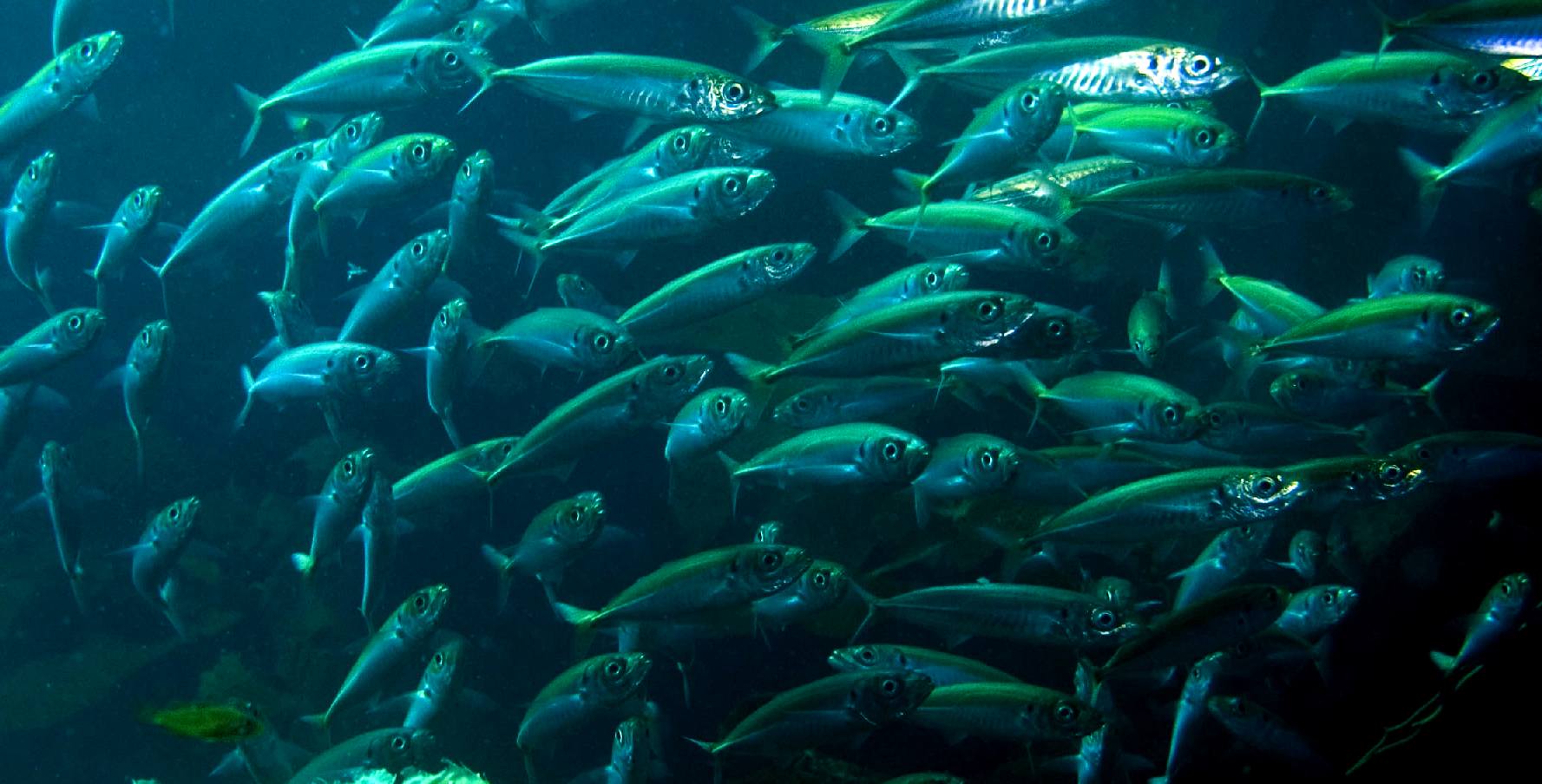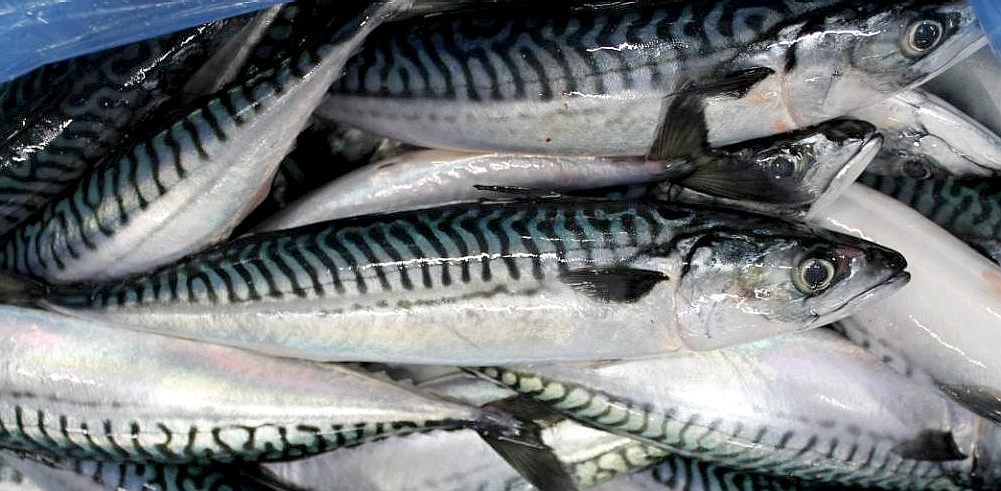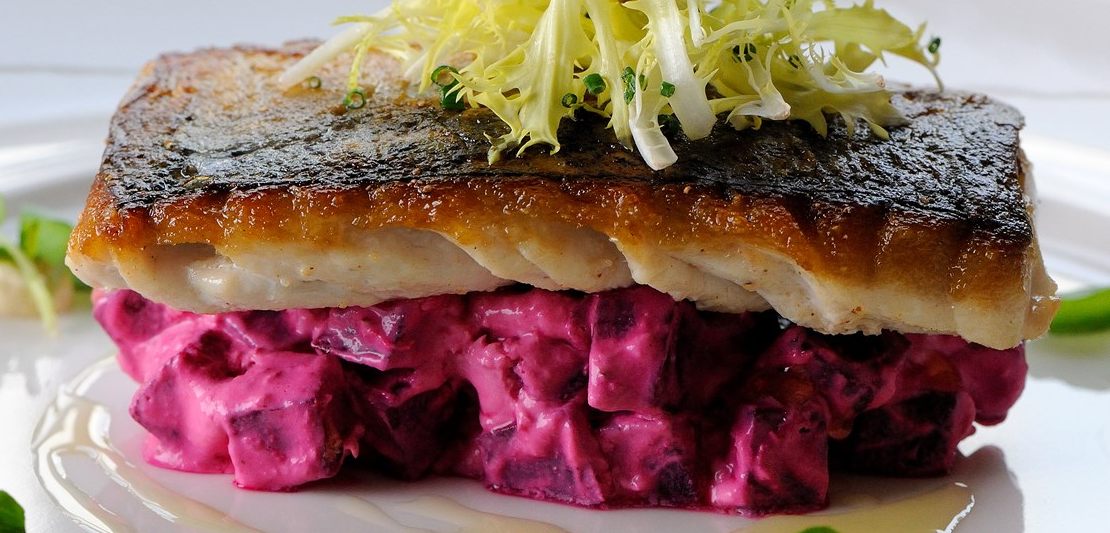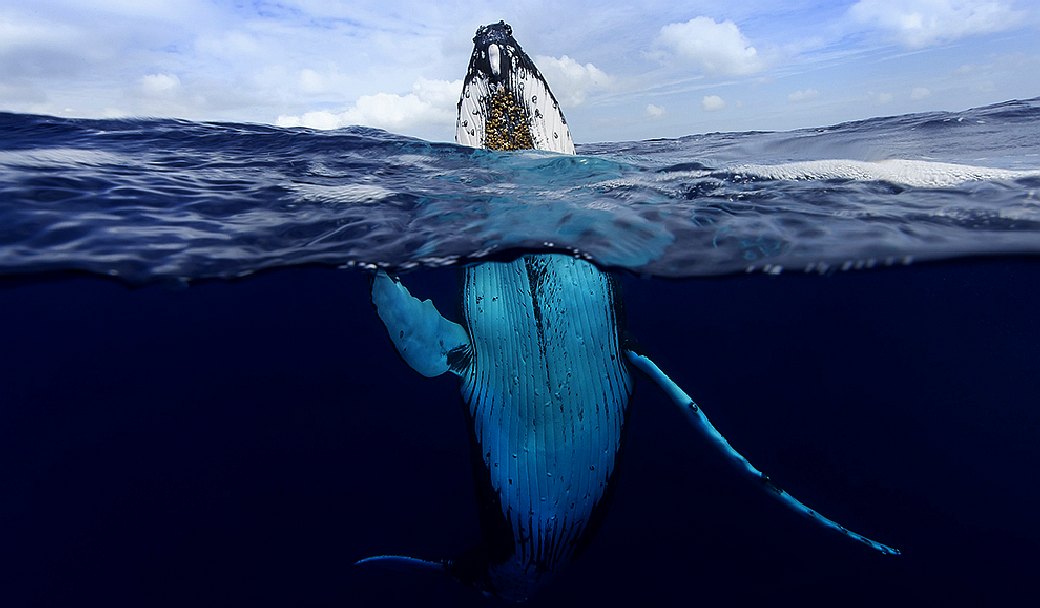|
MACKEREL
ABOUT -
HOME - WHALING
- A-Z INDEX
Anchovies
| Bass
| Bream
| Catfish
| Clams
| Cod
Coley
| Crabs
| Crayfish
| Eels
| Grouper
| Haddock
| Hake
| Halibut
| Herring
| Jellyfish
Krill
| Lobster
| Mackerel
| Marlin
| Monkfish
| Mullet
| Mussels
| Oysters
| Perch
| Plaice
| Pollock
| Prawns
| Rays
| Sablefish
| Salmon
Sardines
| Scallops
| Sharks
| Shrimp
| Skate
| Sole
| Sprat
| Squid
| Sturgeon
| Swordfish
| Trout
| Tuna
| Turbot
| Whiting

STAPLE
FOOD - Mackerel is an important food fish that is consumed worldwide. As an oily fish, it is a rich source of omega-3 fatty acids. The flesh of mackerel spoils quickly, especially in the tropics, and can cause scombroid food poisoning. Accordingly, it should be eaten on the day of capture, unless properly refrigerated or cured.
Mackerel preservation is not simple. Before the 19th-century development of canning and the widespread availability of refrigeration, salting and smoking were the principal preservation methods available. Historically in England, this fish was not preserved, but was consumed only in its fresh form. However, spoilage was common, leading the authors of The Cambridge Economic History of Europe to remark: "There are more references to stinking mackerel in English literature than to any other fish!" In France mackerel was traditionally pickled with large amounts of salt, which allowed it to be sold widely across the country.
In
an effort to feed a
growing population we should look at
alternatives lower down the food chain to increase the ratio
at which protein is harvested from the ocean, so bypassing the
conventional food chain where at each stage of consumption
there are significant losses in the conversion process. Jellyfish,
squid, krill
and filter feeders such a mussels could play a part in filling the widening gap between falling
fish stocks and higher demand to feed
humans - so
relieving the pressure on tuna, salmon and other popular white
fish.
The problem being that plastic
in the ocean is poisoning all marine life, making seafood
potentially toxic and a health
risk in years to come.
ABOUT
MACKEREL
Over 30 different species, principally belonging to the family Scombridae, are commonly referred to as mackerel. The term "mackerel" means "marked" or "spotted".
Mackerel is a common name applied to a number of different species of pelagic fish, mostly, but not exclusively, from the family Scombridae. They are found in both temperate and tropical seas, mostly living along the coast or offshore in the oceanic environment.
Mackerel typically have vertical stripes on their backs and deeply forked tails. Many species are restricted in their distribution ranges, and live in separate populations or fish stocks based on geography. Some stocks migrate in large schools along the coast to suitable spawning grounds, where they spawn in fairly shallow waters. After spawning they return the way they came, in smaller schools, to suitable feeding grounds often near an area of upwelling. From there they may move offshore into deeper waters and spend the winter in relative inactivity. Other stocks migrate across oceans.
Smaller mackerel are forage fish for larger predators, including larger mackerel and Atlantic cod. Flocks of seabirds, as well as whales,
dolphins, sharks and schools of larger fish such as tuna and marlin follow mackerel schools and attack them in sophisticated and cooperative ways. Mackerel is high in omega-3 oils and is intensively harvested by humans. In 2009, over five million tons were landed by commercial fishermen (see graph on the right). Sport fishermen value the fighting abilities of the king mackerel.

Mackerel are prolific broadcast spawners and must breed near the surface of the water due to the eggs of the females floating. Individual females lay between 300,000 and 1,500,000
eggs. Their eggs and larvae are pelagic, that is, they float free in the open sea. The larvae and juvenile mackerel feed on
zooplankton. As adults they have sharp teeth, and hunt small crustaceans such as copepods, as well as forage fish,
shrimp and squid. In turn they are hunted by larger pelagic animals such as tuna, billfish, sea lions,
sharks and pelicans.
Off Madagascar, spinner sharks follow migrating schools of mackerel. Bryde's whales feed on mackerel when they can find them. They use several feeding methods, including skimming the surface, lunging, and bubble nets.
Chub mackerel, Scomber japonicus, are the most intensively fished scombroid mackerel. As can be seen from the graph on the right, they account for about half the total capture production of scombroid mackerels. As a species they are easily confused with
Atlantic mackerel. Chub mackerel migrate long distances in oceans and across the
Mediterranean. They can be caught with drift nets and suitable trawls, but are most usually caught with surround nets at night by attracting them with lampara lamps.
The remaining catch of scombroid mackerels is divided equally between the
Atlantic mackerel and all other scombroid mackerels. Just two species account for about 75% of the total catch of scombroid mackerels.
Chilean jack mackerel are the most commonly fished non-scombroid mackerel, fished as heavily as chub
mackerel. The species has been overfished, and its fishery may now be in danger of collapsing.
Smaller mackerel behave like herrings, and are captured in similar ways. Fish species like these, which school near the surface, can be caught efficiently by purse seining. Huge purse seiner vessels use spotter planes to locate the schooling fish. Then they close in using sophisticated sonar to track the shape of the shoal. Entire schools are then encircled with fast auxiliary boats which deploy purse seine nets as they speed around the school.
Suitably designed trollers can also catch mackerels effectively when they swim near the surface. Trollers typically have several long booms which they lift and drop with "topping lifts". They haul their lines with
electric or
hydraulic reels. Fish aggregating devices are also used to target mackerel.

Mackerel is an oily fish with a strong distinctive
flavour. It is known for being a popular addition to barbecues, but donít let this fool you - there is room for the humble mackerel on more refined menus
such as this dish comprising seared mackerel on beetroot and
horseradish.
OVER FISHING
The North Sea has been overfished to the point where the ecological balance has become disrupted and many jobs in the fishing industry have been lost.
The Southeast US region spans the Gulf of Mexico, the Caribbean Sea and the US Southeast Atlantic. Overfishing of king and Spanish mackerel occurred in the 1980s. Regulations were introduced to restrict the size, amount of catch, fishing locations and bag limits for recreational fishers as well as commercial fishers. Gillnets were banned in waters off Florida. By 2001, the mackerel stocks had bounced back.
LINKS
& REFERENCE
https://en.wikipedia.org/wiki/Mackerel
https://www.bbcgoodfood.com/recipes/collection/mackerel
https://www.greatbritishchefs.com/collections/easy-mackerel-recipes

MARINE
LIFE - This humpback whale is one example of a magnificent
animal that is at the mercy of human
activity. Humans are for the most part unaware of the harm their fast-lane
lifestyles are causing. We aim to change that by doing all we
can to promote ocean
literacy.
Anchovies
| Bass
| Bream
| Catfish
| Clams
| Cod
Coley
| Crabs
| Crayfish
| Eels
| Grouper
| Haddock
| Hake
| Halibut
| Herring
| Jellyfish
Krill
| Lobster
| Mackerel
| Marlin
| Monkfish
| Mullet
| Mussels
| Oysters
| Perch
| Piranha |
Plaice
| Pollock
| Prawns
| Rays
| Sablefish
| Salmon
Sardines
| Scallops
| Sharks
| Shrimp
| Skate
| Sole
| Sprat
| Squid
| Sturgeon
| Swordfish
| Trout
| Tuna
| Turbot
| Whiting
This
website is provided on a free basis as a public information
service. Copyright © Cleaner
Oceans Foundation Ltd (COFL) (Company No: 4674774)
2022. Solar
Studios, BN271RF, United Kingdom.
COFL
is a charity without share capital.
|



